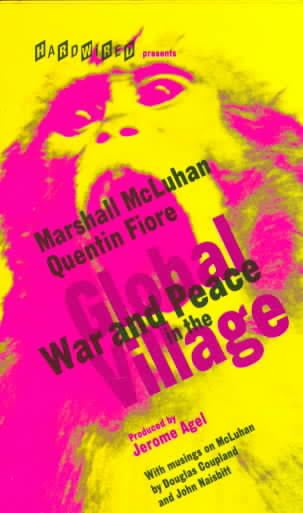8 /10 1 Votes8
Language English Media type Print Country United States of America | 4/5 Goodreads Publication date 1968 Originally published 1968 | |||||||||||||||||||||||||||||||||
 | ||||||||||||||||||||||||||||||||||
Similar Marshall McLuhan books, Mass media books | ||||||||||||||||||||||||||||||||||
War and peace in the global village
War and Peace in the Global Village by Marshall McLuhan and Quentin Fiore is a collage of images and text that illustrates the effects of electronic media and new technology on man. Marshall McLuhan used James Joyce's Finnegans Wake as a major inspiration for this study of war throughout history as an indicator as to how war may be conducted in the future. (1st Ed.: Bantam, NY; reissued by Gingko Press, 2001 ISBN 1-58423-074-6),
Joyce's Wake is claimed to be a gigantic cryptogram which reveals a cyclic pattern for the whole history of man through its Ten Thunders. Each "thunder" below is a 100-character portmanteau of other words to create a statement he likens to an effect that each technology has on the society into which it is introduced. In order to glean the most understanding out of each, the reader must break the portmanteau into separate words (and many of these are themselves portmanteaus of words taken from multiple languages other than English) and speak them aloud for the spoken effect of each word. There is much dispute over what each portmanteau truly denotes.
McLuhan claims that the ten thunders in Wake represent different stages in the history of man:
